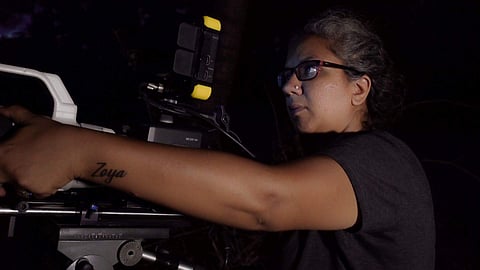

Whenever we watch videos or documentaries related to wildlife on television, every detail about the animals and their way of life seem to fascinate us. The Gaia People, a famous Indian production company have embarked themselves on a journey of capturing wildlife. They have not just created videos on wild animals found in India, rather they have set an unprecedented portrait of India’s natural world, exploring species and habitats rarely seen on Indian television.
On The Brink is an eight-episode documentary series that documents some of the rarest animals found across India. While Season I, which shows closely the life of seven different animals, has already been aired on the Discovery Channel and Animal Planet, Season II will be releasing soon with 10 episodes. Akanksha Sood Singh, Co-founder of The Gaia People, says, “Recently, we shot a short film called Living with the King in the Agumbe Rainforest in Karnataka. The aim was to show people across India how the people of Agumbe live in harmony with king cobras, without causing any harm to them. We felt that more than human-animal conflict, human-snake conflict around the world needs more attention. This is what motivated us to shoot this half-an-hour film. Apart from this, through these short films, we are able to showcase how various people are working at the grassroots to preserve the habitat of these animals.”
She further adds, “Season I included rare species like the great Indian bustard, purple frog, Bengal tiger, red panda, fishing cat, grey slender loris and the Asian black bear. This series prompted a discussion on sustainability and forests. Many people also told us that they did not know that such animals existed in India. Season II is a continuation of Season I. The format is same except there is no anchor who explains everything. This is because we wanted to focus on the stories of the local people living in the forest. We wanted to tell them their own stories about co-existing with these wild animals. Hence, we have added subtitles in all the videos. Season II will include videos on bats, the olive ridley sea turtle, Indian wolf, lion-tailed macaque, gharial, hornbills (multi-species episode), Indian pangolin, vultures (multi-species episode), snow leopard and the Indian elephant.”
Shooting animals, whether domestic or wild comes with its own set of challenges. Akanksha’s team was an all-women team that did not let any challenge wear them down. According to Akanksha, animals are unpredictable. For example, a tiger might have turned up at a particular spot for two days continuously, only to not return on the third day. She explains, “We worked closely with conservationists and biologists to understand animal behaviour better and overcome challenges. They knew the particular location of animals, and this information really helped us. Another challenge was unpredictable weather. For example, Living With the King episode was shot during the monsoons in Agumbe. It was extremely tough for us to shoot the episode. Similarly, when we travelled to Tumakuru in search of grey slender loris, we observed that it would appear during night and quickly disappear within a few minutes. Shooting the episode on the red panda was very difficult as well as it is mostly found in Arunachal Pradesh, where there were several travel restrictions. In all the nine days of shooting, we could only spot it for a few hours. Likewise, the purple frog spends much of its time underground and comes out for only five days before the monsoon starts. We were lucky to land in Annamalai at the right time to shoot an episode on it.”
Akansha and her team make it a point to see that the episodes they shoot are scientifically and factually correct. This, they do by involving contributors even in the post-production stage to check for any errors. “The contributors come and watch the video before it is released. If there are errors, then we make sure it is set right before it is aired,” says Akansha who has been a wildlife documentary maker for 18 years now.
